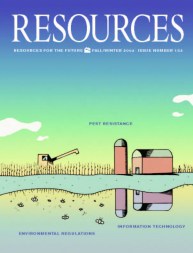May 27, 2010

The fight against agricultural pests that destroy crops and reduce yields is as old as agriculture itself. In the 21st-century variant of this fight, humans have called in biotechnology. Some commercial varieties of corn, soybean, and cotton, among other crops, have now been engineered to express a protein of Bacillus thuringiensis (or Bt), a soil microbe that can kill caterpillars and other agricultural pests while being apparently harmless to humans and other non-target species. Bt has been used in foliar sprays for more than four decades, mostly in organic farming. Now, with rapidly expanding acreage of Bt crops and widespread exposure of pests to the Bt toxin from commercial agriculture, resistant strains of pests may develop. Resistance evolves in the following way. Initially, resistance genes occur at extremely low frequencies in the pest population because they are not essential to the species’ survival. Once exposed to a pesticide, however, individual pests that do not possess the resistance gene are killed while the few with the gene survive. Over time and with repeated exposure to the toxin, the proportion of resistant pests becomes significant, reducing the effectiveness of the pesticide. This problem of resistance complicates any effort to control a biological organism through chemical or biochemical methods. This is particularly important in the case of pest-resistant transgenic crops: the rapidly expanding share of genetically modified (GM) crops in agriculture worldwide creates greater potential for systemwide damage if these crops fail against pests.

